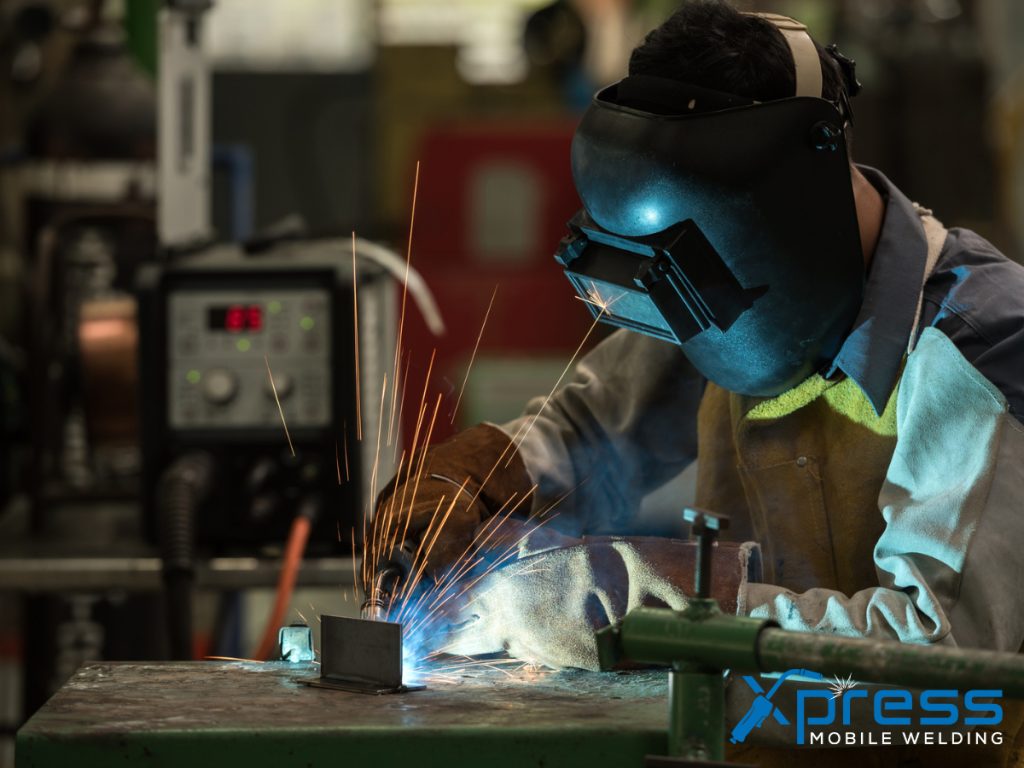Do you know what cold welding is? It’s a process where two pieces of metal are joined together without the use of heat or any other bonding agent. In fact, the only thing that’s required is to make sure the surfaces of the metals are perfectly clean and free of any contaminants. So how does it work? And more importantly, why should you care? Keep reading to find out!
What is Cold Welding and Chat Are its Benefits/Drawbacks?
Cold welding, on the other hand, is a welding process that does not use heat. Instead, it relies on the pressure of the two pieces of metal being joined together to create a strong bond. There are several benefits to cold welding, including the fact that it is a much cheaper welding process than traditional welding methods. In addition, cold welding does not produce any hazardous fumes or flames, making it a safer welding option.
However, there are some drawbacks to cold welding as well. For example, because the bond is created by pressure rather than heat, cold-welded joints are not as strong as those created using traditional welding methods. In addition, cold welding can only be used on metals that are compatible with each other. incompatible metals will not bonded together using this method.
How Does Cold Welding Work?
The welding process involves joining two pieces of metal together using heat until the metals melt, and then allowing them to cool and solidify. There are several welding methods, but cold welding is a welding method that does not require the use of heat. Cold welding is often used for welding metals that are sensitive to heat, such as aluminum and magnesium.
In cold welding, the two pieces of metal to be joined are placed in contact with each other. A powerful electrical current is then passed through the metals, which creates an electromagnetic field. This field causes the atoms in the two pieces of metal to align, and as the atoms align, they bond together. The bond created by cold welding is often stronger than the bond created by welding with heat.
Why Should You Care About Cold Welding?
If you are looking for a cheaper and safer welding option, then cold welding may be the right choice for you. In addition, cold-welded joints can be just as strong as those created using traditional welding methods. However, it is important to note that cold welding can only be used on metals that are compatible with each other. Incompatible metals will not be bonded together using this method.
What Industries Use Cold Welding?
By heating the surfaces of two pieces of metal to the point of melting and adding a filler material, welding joins those two pieces together.Cold welding, also known as friction welding or flash welding, is a type of welding that does not require the use of heat or filler material. Instead, it relies on friction and pressure to create a strong bond between two pieces of metal. Cold welding is often used in industries where traditional welding methods are not possible or practical, such as in the aerospace industry. Phoenix welder is a company that specializes in cold welding technology. Their welders are used in a variety of industries, including aerospace, automotive, and medical. Phoenix welder’s are able to create strong, reliable bonds between metals of all types, making them an essential tool in many industries.
While cold welding is not as common as traditional welding methods, it has a number of advantages that make it an attractive option for many industries. Cold welding is a much cheaper welding process than traditional welding methods. In addition, cold welding does not produce any hazardous fumes or flames, making it a safer welding option.
How to Perform a Cold Weld?
 Welders are often employed in the construction of cold welds. A cold weld is a weld made at low temperatures, typically below the freezing point of water. Welders use a variety of techniques to achieve this, but the most common is to use a cold welding. Cold welds are typically used to join two pieces of aluminum or stainless steel. When done correctly, they are nearly as strong as traditional welds made at higher temperatures. As a result, cold welds are an essential tool for welders who work in extreme environments.
Welders are often employed in the construction of cold welds. A cold weld is a weld made at low temperatures, typically below the freezing point of water. Welders use a variety of techniques to achieve this, but the most common is to use a cold welding. Cold welds are typically used to join two pieces of aluminum or stainless steel. When done correctly, they are nearly as strong as traditional welds made at higher temperatures. As a result, cold welds are an essential tool for welders who work in extreme environments.
There are a few things to keep in mind when performing a cold weld. First, it is important to make sure that the two pieces of metal to be joined are clean and free of debris. Second, the metal should be cold before beginning the welding process. This can be achieved by placing the metal in a refrigerator or freezer for a period of time. Third, it is important to use a lower welding current when performing a cold weld. This will prevent the metal from overheating and becoming damaged. Finally, it is important to allow the weld to cool slowly after it has been made. This can be done by placing the welded piece of metal in a container of water.
Applications of Cold Welds
Welders are increasingly using cold welds in a variety of applications. Cold welds are particularly well suited for joining metals that are difficult to weld using traditional methods. In addition, cold welds can be used to create strong and durable joints without the use of heat or filler material. As a result, they are an ideal choice for applications where weld quality is critical. Some of the most common uses for cold welds include repairing pipelines, joining dissimilar metals, and fabricating delicate structures. By understanding the capabilities of cold welds, welders can open up a world of possibilities for their projects.
While cold welding has a number of advantages, there are also some disadvantages to using this method. One of the biggest disadvantages is that cold welding can only be used on metals that are compatible with each other. Incompatible metals will not be bonded together using this method. Another disadvantage is that cold welds are not as strong as traditional welds. This is due to the fact that they do not have the same level of heat-induced crystal growth. Finally, cold welds are more likely to crack than traditional welds.
Despite these disadvantages, cold welding is a viable option for many projects. When used correctly, it can be an incredibly strong and durable way to join two pieces of metal. By understanding the process and how to properly execute a cold weld, welders can expand their capabilities and take on new challenges.
Safety Precautions When Performing a Cold Weld
When welders are performing a cold weld, they need to take certain safety precautions. First, they need to make sure that the area around the weld is clean and free of debris. Second, they need to wear appropriate clothing, including gloves and a welding mask. Third, they need to be aware of their surroundings and make sure that there are no flammable materials nearby. Fourth, they need to use the correct welding technique for the material being welded. If welders follow these safety precautions, they can help prevent accidents and injuries.
Performing a cold weld can be a challenging task, but it is an essential skill for welders. By understanding the process and taking the necessary safety precautions, welders can successfully execute a cold weld and create strong and durable joints.
Conclusion:
Cold welding is a type of welding that does not require the use of heat or filler material. Instead, it relies on friction and pressure to create a strong bond between two pieces of metal. Cold welding is often used in industries where traditional welding methods are not possible or practical, such as in the aerospace industry. At Phoenix Welder, we focus on cold welding technology to help you with all your needs.Their welders are used in a variety of industries, including aerospace, automotive, and medical. They have a wide range of products that can meet the needs of any customer.Phoenix welder’s welders are able to create strong, reliable bonds between metals of all types, making them an essential tool in many industries.

